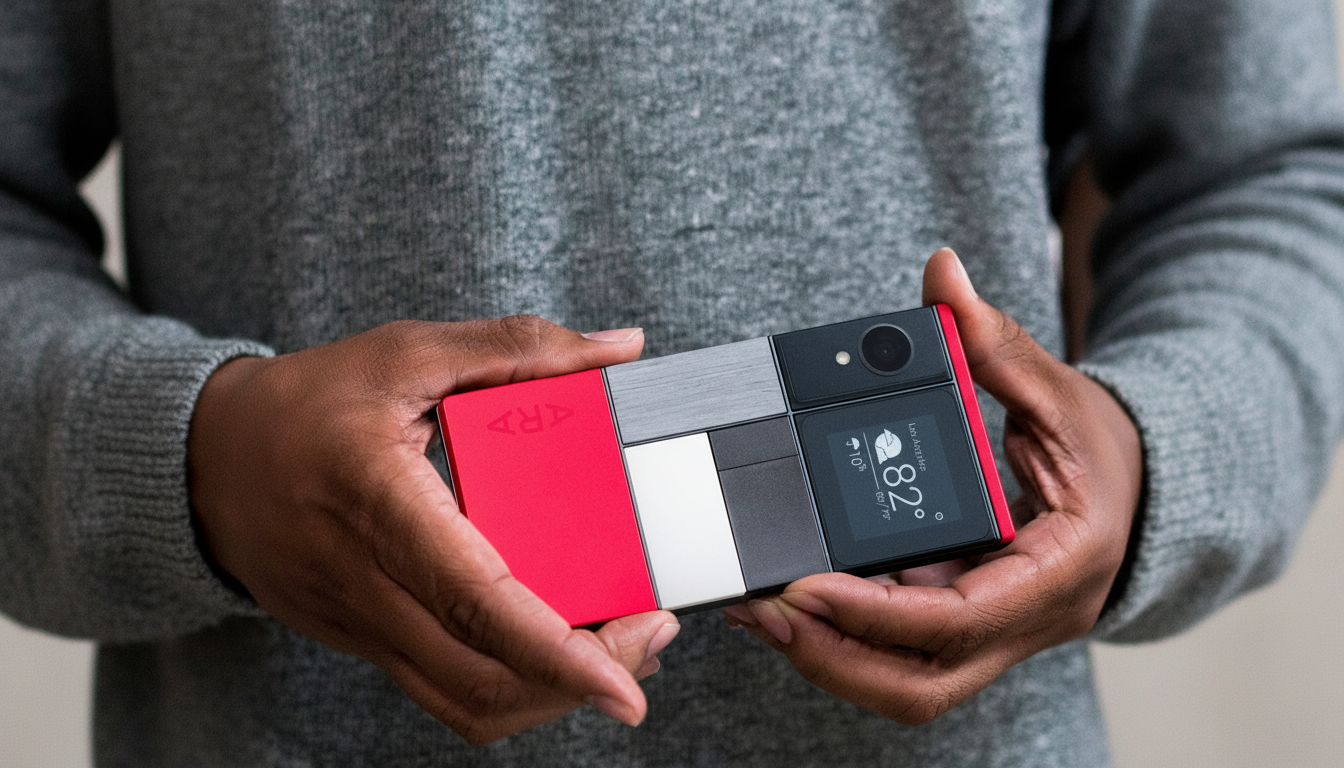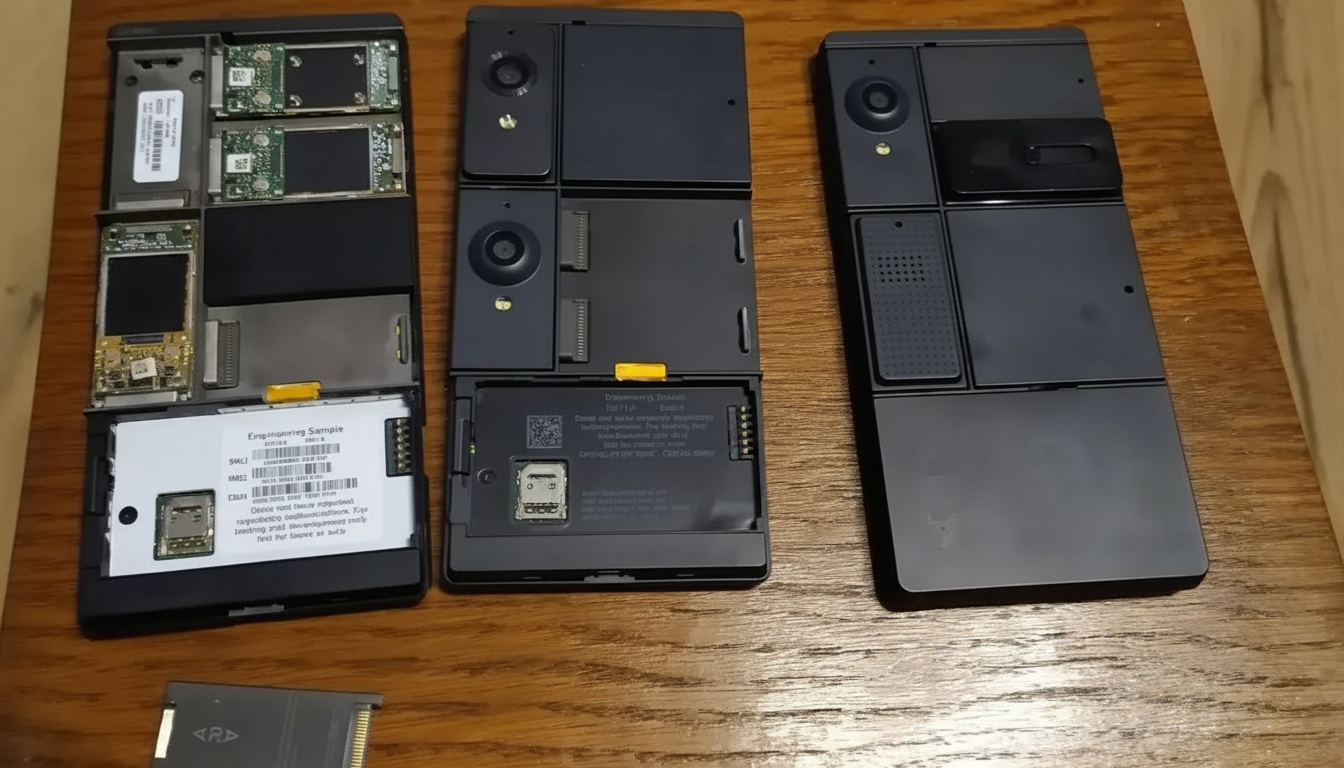Google’s long-abandoned modular phone experiment is back in the spotlight, out of the blue. A TikTok creator has shared videos of three working Project Ara prototypes, providing the most detailed look in years at a concept that once promised to let you swap out phone components like Lego bricks.
The videos show the handset powering on, its software drawer, and a hands-on presentation of some modules popping out and back into place. The creator, who goes by the name “Racoondetectionsquad,” also posted shots of modules up close and spec sheets, offering hardware sleuths something new from a project Google dropped as it refocused its strategy for hardware.

A Glimpse Of Google’s Modular Experiment
Project Ara’s work began inside Google’s Advanced Technology and Projects group, which publicly disclosed the project in 2013 only after more than a year of incubation. The idea revolved around an endoskeleton that sported swappable modules containing the core components—camera, battery, speakers, storage, and so on—secured with electropermanent magnets. Early demos even included software-based ejection, so a user could “pop” a module without yanking it out.
The TikTok clips are a reflection of that vision. In another of the clips, the handset boots into what appears to be a stock Android interface (littered with placeholder icons), and there’s also mention of two ways to detach the modules: by either activating an on-screen eject button or poking a SIM tool into a small release aperture. It’s a bracing reminder that Ara wasn’t just some concept trotted out in slide form—this was real, unwieldy, to be sure, but tangible, with several large prototypes shown off at developer events or behind closed doors.
Why Google’s Project Ara Was Scrapped Altogether
Yet for all the genius, Ara careened headlong into the harsh facts of life. Dividing radios, cameras, and power into distinct blocks makes RF performance and thermal considerations more complex. Throw in mechanical tolerances, durability issues, and having to certify dozens of module combinations — and the cost and complexity skyrocket. By 2016, Google also adopted a more traditional, fixed “core” design with the CPU, GPU, and antennas integrated into it — though still modular and less radical. The company shut down the project that year as it consolidated hardware efforts under one roof.
The retreat came after a shaky rollout plan. A planned pilot in Puerto Rico never materialized, and successive prototypes (frequently called Spiral versions) showed how difficult it was to strike a balance among thinness, battery life, and reliability while keeping the device hot-swappable. At the same time, the rest of the smartphone market was careening toward tightly integrated slabs that favored cameras, displays, and density over customization.
The Promises of Modular Collide With Reality
The pitch for modularity has always been enticing: less e-waste, longer lifespan of a device, and user choice. The International Telecommunication Union’s Global E-waste Monitor estimates that the world produced some 62 million metric tons of e-waste in 2022, with only around 22 percent of it formally collected and recycled. A swappable camera or battery seems like an intuitive countermeasure to throwaway culture.

Reality proved messier. Smartphones are a physics problem fused with a fashioning effort. After all, consumers reward thinness, all-day battery life, and great cameras — areas where tight integration shines. Attempts to thread the needle have popped up elsewhere: Fairphone has made a point of promoting repairable designs using modular subassemblies; Framework has demonstrated modularity can find a place in laptops; and Motorola’s Moto Mods have embraced snap-on accessories over full component swaps. Those are valuable, but they fall short of Ara’s ambition.
What The Prototypes Show Now About Project Ara
The new clips illustrate how fleshed out Ara became by its later stages. The modules on display here are recognizable building blocks — the camera units, batteries, and speaker elements slotting into place via contact interfaces and hardware latches with magnet assists. Boot sequences and pre-release firmware screens point to mid-2010s internals, but the chipsets and even radio stacks aren’t identifiable in the footage.
Software flow is just as interesting, too. Module control panels and an eject mechanism suggest that Google had already envisioned a user experience in which hardware tinkering was reduced to a few taps. It’s the sort of information that, had it been shipped, could have gone a long way toward demystifying repairs and upgrades for ordinary users.
Could Modular Phones Return in a Mainstream Way?
Never say never, but the direction of the industry points to modular as a niche. Instead, repairability is actually getting better within the integrated paradigm: Parts pairing restrictions are loosening in some geographies, self-service repair programs are expanding, and regulators (in the EU and a number of U.S. states) are pushing right-to-repair measures. Google, Apple, and Samsung now publish repair guides to popular devices and sell parts through partners, offering a path toward longer usable lives for mainstream devices without fully modular designs.
But Ara’s surprise appearance on TikTok is about more than nostalgia. It’s a vision of another timeline in which phones act a little bit more like PCs, where you don’t need to buy an entirely new system just to upgrade the camera, and where the value proposition itself includes sustainability rather than hiding behind botched marketing slides. Even if the market never goes all in on modules, the lessons from Ara continue to inform conversations about design, lifespan, and who gets to say what a phone can be.

